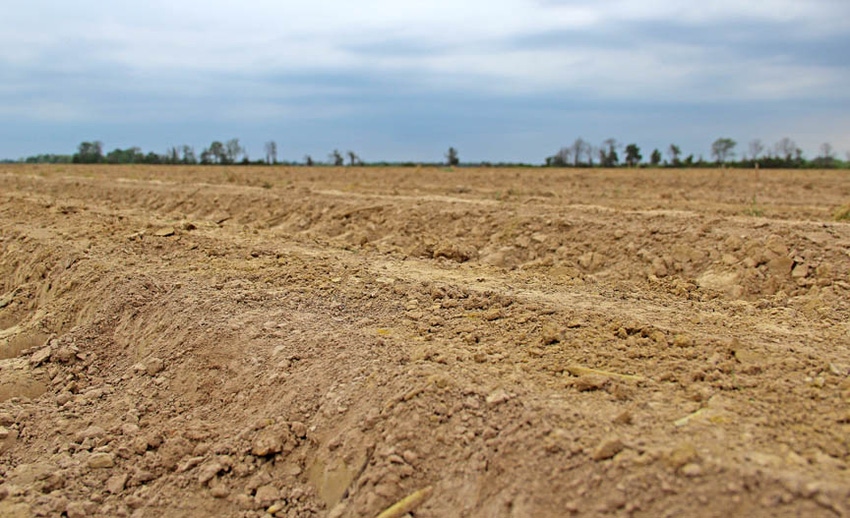June 25, 2012

Everyone remembers 1991 — 36 farmers were blown apart. Years can pass without a farmer being killed, but the roulette chamber is always revolving toward the inevitable.
From 1914-1918, over 1 billion shells rained down on World War I battlefields, much of that on European farmland in France and Belgium. With a dud rate of 20 percent to 25 percent, hundreds of millions of shells are still buried today. Grenades, bombs, shrapnel shells and poison gas canisters — all wait patiently 100 years on.
After the war, the killing fields were pitted with live shells — absolutely saturated. France sealed away 15 million acres, slammed the proverbial door and hung a “do not enter” sign. Much of that land remains cordoned off and forbidden to this day; the realm of demolition experts and an occasional lunatic poking about for souvenirs.
But on acreage that was never zoned off or has been reclaimed, farm life goes on. Every spring, as farmers prepare their fields, rains bring a metallic shine. Most of the gleam is from spent shrapnel (the most common shell fired during World War I), but without fail, live rounds are exposed. The farmers either contact special demolition squads, or drag the shells to the edge of fields for collection later. It’s not unusual for a farmyard to have stacks of shells awaiting pick-up by French “demineur” bomb-disposal teams, specially trained to handle live rounds.
From fist-sized stick grenades, to round aerial bombs, to shells as thick as a thigh, the bomb-disposal squads handle thousands of tons per year. And with a high cost. Hundreds of demineurs have been killed since the squad was created just after World War II.
It’s not just bombs and shrapnel rounds that remain lethal; poison gas shells abound. By 1917, artillery shells were being used to deliver poison gas, and the rounds were color-coded to mark them as toxic. But 100 years later, the color has often rusted away, with nothing to distinguish the shells except for a tell-tale noise they make when picked up. The corroded gas shells still contain toxic liquid and make a swishing sound when jostled. The liquid was meant to vaporize into gas upon explosion of the shell.
Death in the furrows
Dig deeper below the exposed shrapnel; deeper below live shells soon to break the surface; deeper under bombs still buried; and find a chilling reminder that the past is present. Tunnels and mines honeycomb the fields, some of them still loaded with explosives that were forgotten or failed to ignite. In 1955, lightning set off an explosives cache hidden under a field. The vast tunnel system below Ypres, Belgium, often reveals itself through collapses. It’s not unheard of for a tractor or combine to drop 5 or 10 feet into an old tunnel when rotting support beams crumble and the dirt above gives way.
Adam Hochschild, in his World War l account “To End All Wars,” gives a sobering description of what the fields hold:
“Beneath these placid farms lies a layer of soil densely sprinkled with rusted metal: cartridge clips, belt buckles, helmets, canteens, tobacco tins, bells used to sound the alarm for a gas attack, barbed wire, the screw-in metal stakes to which the wire was fastened, shell fragments and shells, rifles with their stocks rotted away, plus the occasional artillery piece, swallowed whole by mud. Plows unearth it all; some half-million pounds of First World War scrap is still collected from French and Belgian fields each year.”
There are enough munitions buried in Europe’s farmland to keep the demolition squads busy for several 100 years — and maybe the next 1,000. Death in the furrows was a reality 100 years ago, and periodically, still is today.
Follow me on Twitter: @CBennett71 or email me: [email protected]
Blog archive
James Bond once worked for the EPA
AK-47 rifle was agriculture’s giant loss?
What treasure is buried beneath farmland?
Farmer suicide and the road to agricultural ruin
Gun control and agriculture clash over homemade pistol
Farmland hides mobster for 10 years
What are the greatest agriculture breakthroughs in history?
Pig farmer replays Deliverance with repo men
Where is one-fifth of the world’s fresh water hiding?
You May Also Like




